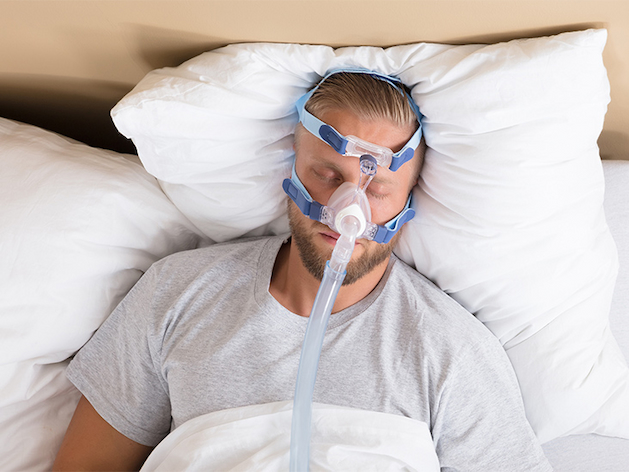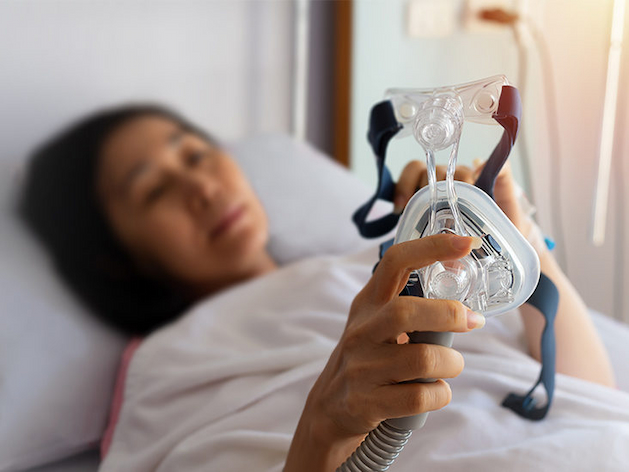Everyone occasionally has a bad night’s sleep, but if you have sleep apnea, it can have a variety of negative effects on your life. With regular, quality sleep, your health, your job, your relationships, and your enjoyment of life can all improve. You deserve to feel your best and have the energy to make the most of every day.
What Is Sleep Apnea?
When the muscles in the back of your throat relax too much, it causes obstructive sleep apnea, which prevents normal breathing. The tongue, tonsils, uvula, the triangular portion of tissue hanging from the soft palate, and the back of your mouth’s roof (soft palate) are all supported by these muscles.
Breathing regularly stops and starts during sleep, which is known as sleep apnea. You may have sleep apnea if you snore loudly and still feel exhausted after a full night’s sleep.
These are a few kinds of sleep apnea. The more prevalent type of obstructive sleep apnea happens when throat muscles relax. Central sleep apnea develops when your brain fails to properly activate the breathing muscles. When a person has both central and obstructive sleep apnea, it is known as complex sleep apnea syndrome, also called treatment-emergent sleep apnea.
What Are the Benefits of a CPAP Trial?

Source: healthline.com
An excellent method to explore CPAP without having to buy your own machine and mask is through a trial. You get the opportunity to try out CPAP therapy with a CPAP machine trial and see whether it is the correct fit for you. A mask, tubing, and CPAP machine are the components of this medical trial.
Generally speaking, a typical CPAP trial includes access to all major brands of CPAP equipment and accessories, as well as multiple in-depth clinic sessions with experienced consultants. Over the course of the 30 days, careful observation and consultation with a doctor will make sure you are making progress towards a successful outcome.
Even though CPAP – and lifestyle change – is the most effective and widely used way to treat obstructive sleep apnea, some people find the mask to be bulky, uncomfortable, or noisy. Although there are several mask designs for personal comfort, contemporary machines are smaller and less noisy than older ones.
Additionally, most people can adjust the mask to get a snug and comfortable fit with a little effort. To locate a mask that fits, you might need to try a few different kinds. There are several choices, including face masks, nasal pillows, and nasal masks. In addition to your CPAP machine, using a humidifier may be beneficial.
The pressure at which CPAP is administered can either be constant (fixed) or variable (auto-titrating) (APAP). The pressure with fixed CPAP remains constant. If the machine detects increased airway resistance when auto-titrating CPAP is being used, the pressure levels are changed.
Another form of positive airway pressure is called bilevel positive airway pressure (BPAP), which applies a fixed amount of pressure when you breathe in and a varied amount when you exhale.
Because it has been well-researched for obstructive sleep apnea and has been proven to be an effective treatment, CPAP is increasingly being utilised. However, BPAP or APAP might be worth a try for those who have trouble tolerating fixed CPAP.
If you experience issues, keep using your positive airway pressure device. To find out what modifications you can make to increase its comfort, consult with your doctor.
What Are the Potential Side Effects of Using a CPAP Machine?

Source: healthline.com
While becoming used to your CPAP therapy, you could feel some pain. The main side effects of sleep apnea trial therapy that people report are skin rashes from the mask, dry eyes, nasal congestion, and airway dryness.
The majority of people will tell you that the hardest part of starting CPAP therapy is getting acclimated to using it. You’ll need time and persistence to become used to using CPAP, but after using it continuously for two weeks, you should begin to recognize the advantages.
Risk Factors of Obstructive Sleep Apnea
Anyone, even children, can be affected by sleep apnea. However, a few things make you more vulnerable to developing this condition. The following factors raise the likelihood of developing this type of sleep apnea:
Increased Body Weight
With more weight, there is more tissue in the back of your throat. This can cause the airway to collapse more easily during sleep, particularly if you sleep on your back. If you’ve gained weight for any reason and especially if you snore, you’re at greater risk of sleep apnea.
Neck Circumference
This is essentially a measure of how much fat is around your neck. A larger neck circumference means there’s more tissue in the throat, which can block the airway.
In terms of centimetres, men are considered to be at risk if their necks measure 43 cm or more. Women are more likely to develop the condition if their necks measure 41 cm or more.
Age
Naturally, our bodies tend to change as the years go by. Not only do we get older, but we also usually grow larger. This can cause some of the same issues that excess weight does, making us more susceptible to sleep apnea.
People of any age can have sleep apnea. However, it’s most common in middle-aged adults and those who are older due to the changes that occur in our bodies as we age.
Family History
If sleep apnea runs in your family, you may be more likely to develop it yourself. Like other conditions, sleep apnea can be hereditary. This is thought to be due, at least in part, to the fact that certain physical characteristics, such as a small jaw, large tongue, and recessed chin, are often passed down from one generation to the next.
Other Medical Issues

Source: washingtonpost.com
Some of the illnesses that may raise the risk of obstructive sleep apnea include Parkinson’s disease, congestive heart failure, high blood pressure, and type 2 diabetes. Risk factors include polycystic ovarian syndrome, hormonal issues, a history of stroke, and persistent lung conditions including asthma.


